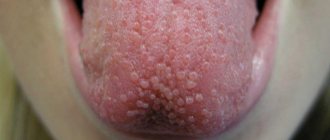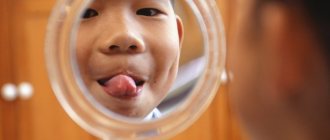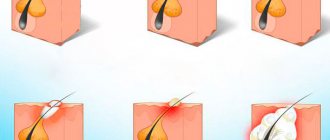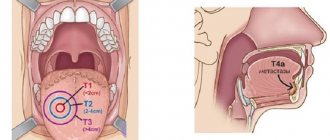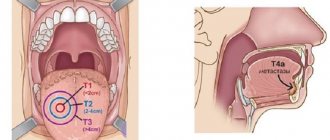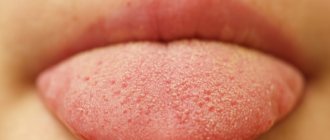Cheek cancer is a malignant neoplasm of the oral cavity.
Examination of patients with symptoms of cheek cancer at the Yusupov Hospital is carried out using modern diagnostic equipment from leading companies in the USA and European countries. Oncologists provide comprehensive treatment for cancer of the buccal mucosa. The medical staff is attentive to all the wishes of the patient. Chefs provide special dietary meals. Professors and doctors of the highest category develop tactics for managing patients with cheek cancer at a meeting of the expert council. Early diagnosis of the disease and multidisciplinary therapy improve the prognosis and five-year survival of patients after treatment.
Causes of cheek cancer
Cancer of the buccal mucosa develops under the influence of the following provoking factors:
- Use of tobacco in any form (cigarettes, cigars, pipes, chewing tobacco);
- Alcohol abuse (the risk of developing cancer increases when the use of alcohol and tobacco is combined);
- Infection with carcinogenic forms of human papillomavirus.
One risk factor is exposure to sunlight. Both family history and genetic predisposition, as well as exposure to mutagenic environmental factors, play a role in the development of cheek cancer. The formation of a malignant tumor occurs in several stages. The most important is the disruption in the functioning of oncogenes and genes that inhibit tumor growth. The development of malignant neoplasms of the cheek is associated with inactivation of the p16 gene, mutations in the p53 gene, and the introduction of the human papillomavirus.
Doctors' advice and recovery period
According to the advice of experts, after excision of the affected area (in the event that the internal bump on the cheek was removed surgically), the patient should be very careful and take his condition seriously. For example, you should completely review your diet, eliminating roughage from it.
At first, if a bandage has been applied to the patient, you must be extremely careful not to touch the seam; it is important to allow it to tighten efficiently and painlessly. In addition, in case of excision of areas on the cheeks, the risk of scar formation remains.
We must not forget that the operation itself is additional stress for the body; after it, it is very important to strengthen all your strength from the inside. To do this, you will need to eat right, in addition, good sleep is important along with giving up bad habits, and if possible, you need to avoid any worries and stress. You should not self-medicate; seeking medical help will help you quickly cope with the disease.
The mechanism of development of cheek cancer
Malignant tumors of the cheek occur against the background of precancerous changes in the epithelial and subepithelial layers (leukoplakia or erythroplakia). The risk of leukoplakia degenerating into invasive cheek cancer is about 4-6%, with erythroplakia it reaches 30%. Subsequently, dysplasia transforms into “cancer in situ”, which penetrates into surrounding tissues and metastasizes to local and regional lymph nodes.
In some patients, even those cells that do not initially raise suspicion of dysplasia upon initial microscopy may gradually become malignant. As the tumor process progresses, distant metastases occur in the bones, lungs, and liver. Buccal cancer can grow through the skin.
Home therapy
Treatment can be started at home in the case of a single manifestation, when the tendency for the lump to grow in size does not persist. Here are a few recipes that can help you cope with this disease on your own without seeking medical help:
- If the manifestation is completely fresh, then you should try using raw chicken egg white several times a day.
- You should take a small piece of cotton wool and soak it in castor oil, then apply it to the bump in the cheek area.
- The procedure should be repeated twice a day.
- It is necessary to cut a clove of garlic into slices, and then lubricate the growths with them three times.
- You need to prepare a tincture, for which you will need the peel along with walnut leaves. You should pour some alcohol into the dry ingredient and let it sit for two weeks, and then lubricate the formation with it once or twice daily.
Symptoms of cheek cancer
Cheek cancer in the initial stages of the tumor process is asymptomatic. Any ulcer that is not prone to rapid healing and any area of hyperkeratosis should be regarded as an early stage of cancer. In the early stages of cheek malignancy, there is little or no pain. As the size of the cancer tumor increases, the following symptoms appear:
- Pain;
- Induration and infiltration of underlying tissues;
- Enlargement of regional lymph nodes, including damage to the lymph nodes of the submandibular triangle, jugular-digastric group and deep cervical lymph nodes.
What does cheek cancer look like? Any non-healing oral mucosal ulcer should be assessed as a potentially malignant tumor and consultation with an oncologist should be sought.
Growth on the gum: why it appears and how to treat
A growth has appeared on the gum: what is the cause
Infectious diseases
Non-communicable diseases
Types of growth
Gum cancer
Lump after crown installation
Growth on the gum: how to treat
Which doctor should I contact if a growth appears on the gum?
Normally, the gums have a smooth, pale pink texture. Any change, be it a thickening or a growth, signals problems in the body that cannot be ignored, as they pose a health hazard. Why lumps appear on the gums and how to treat them, we will tell you in the article.
Diagnosis of cheek cancer
If a tumor of the mucous membrane of the cheek is suspected, oncologists at the Yusupov Hospital conduct an examination using a mirror, palpation of the tumor and lymph nodes. If a long-term non-healing ulcer is detected, a biopsy is performed. If a negative result of histological examination of the material obtained during the biopsy is obtained, the suspicion of the malignant nature of the tumor remains, the biopsy is performed again.
Oncologists clarify the stage of the tumor process, assess the extent of spread of the malignant tumor from the buccal mucosa to adjacent tissues, and find out whether there are metastases to regional lymph nodes and distant organs. If the presence of metastases is suspected, computer and magnetic resonance imaging, ultrasound, and scintigraphy are used. Distant metastases are found in 20% of patients at the time of diagnosis.
Computed tomography and magnetic resonance imaging make it possible to assess the condition of the deeper anatomical structures of the oropharynx and surrounding tissues. If there is a suspicion of metastases to the lymph nodes or tumor infiltration of the floor of the mouth, a cytological examination of the aspirate obtained under ultrasound guidance is performed. To exclude distant metastases, a chest x-ray in two projections and an ultrasound examination of the abdominal organs are done.
Considering that the prognosis for cheek cancer is serious, a tomography of the neck, chest and upper abdominal cavity is performed. Using bone scintigraphy, I exclude bone metastases. Positron emission tomography allows one to identify the source of metastases in cases of undetected primary tumors.
The danger of atheroma on the face
Sebum and keratin masses accumulated in the atheroma capsule have a cheesy consistency. This is a favorable environment for the development of bacteria. An attempt to squeeze out the atheroma can lead to infection getting inside the capsule and causing suppuration. The main symptoms of its onset are:
- redness of the skin around the atheroma;
- pain in the affected area;
- Migraine-like headaches;
- temperature increase.
Inflamed atheroma can lead to phlegmon - inflammation of adjacent tissues without precise boundaries.
Rice. 3 Self-squeezing of atheroma usually leads to inflammation of facial tissues
Treatment for cheek cancer
Malignant tumors are successfully cured using radical radiation therapy while preserving the function of the oral cavity. Radiologists implant radiation sources because it is possible to irradiate a small volume of tissue at a high dose. Radioactive isotopes of cesium, gold, radium, iridium, tantalum, which have the same efficiency, are used as sources.
For small tumors, the size of which does not exceed 1 cm, they are limited to implantation of a radiation source, without resorting to additional external influence. In cases of slightly larger tumors that are not suitable in size for implantation, external irradiation is used along with source implantation.
Traditionally, large cheek tumors are treated with external beam radiation. Recently, oncologists have been using a combination of radiation and chemotherapy. Mobile lymph nodes are radically excised. During prophylactic removal of lymph nodes without signs of damage, in a significant number of cases, foci of micrometastasis are found in them. For this reason, radiologists prefer to perform prophylactic irradiation of the neck in patients without evidence of lymph node involvement by the external beam, sometimes in combination with surgical treatment.
After surgery for cheek cancer, a cosmetic defect is formed. The results of surgical intervention are improved using the technique of microvascular free skin grafting. If a patient develops dry mouth after radiation therapy, he is prescribed oral pilocarpine. The drug increases salivation, which is usually accompanied by minor side effects - sweating and increased urination. For primary or secondary treatment of tumors of the buccal mucosa, patients are prescribed chemotherapy drugs.
Early diagnosis of a cheek tumor allows for effective treatment. If the tumor process is at a late stage, the prognosis worsens. If you experience unpleasant sensations in the oral cavity or identify ulcers of the buccal mucosa, undergo an examination at the clinic by calling the Yusupov Hospital.
What should you do if you have an illness?
After a biopsy, such patients may be prescribed the following types of therapy:
- Carrying out surgical treatment of a bump on the cheek under the skin. For this, electronic scissors are used, and immediately after removing the tumor, the affected area is cauterized. Therapy is continued with a course of antibiotics.
- Injection treatment. It involves special injections containing alcohol, which are given directly to the area of the granuloma.
- Performing laser treatment.
- Local injections using aletretin gel.
So, a bump appeared on my cheek. Regardless of the size of the pathological growth, one should not delay going to a specialist, this way a person can quickly feel comfortable and avoid all sorts of complications.
Where to have surgery for Bisha's lumps (before and after photos)
According to statistics, every third woman wants to remove Bisha's lumps (before and after photos are presented on the Internet and also in a special section on the website). Bichectomy is not the simplest surgical procedure. Its poor quality can lead to various complications. In order not to make a mistake in choosing a clinic, it is recommended to consider the following parameters:
- rating;
- pricing policy;
- quality of equipment and materials used;
- qualifications and experience of specialists;
- guarantees;
- patient reviews.
The selected clinic must be fully equipped with modern equipment and high-quality materials. The safety of the procedure directly depends on these factors. It is also important to choose a medical center where doctors with extensive experience work. This criterion is the main guarantee of a positive result.
Prices for the service may vary in different private clinics in Moscow. The final cost includes the doctor’s work, materials used and diagnostic measures. As a rule, this price is specified in the concluded contract. Conscientious medical centers provide guarantees for the services provided. After surgery, most patients leave reviews on the official website of the clinic. If everything suits you, the feedback is positive. When a patient is dissatisfied with the quality of treatment, he leaves a negative review, warning other potential clients. Based on the number of positive and negative reviews, conclusions can be drawn about the quality of the services provided.
